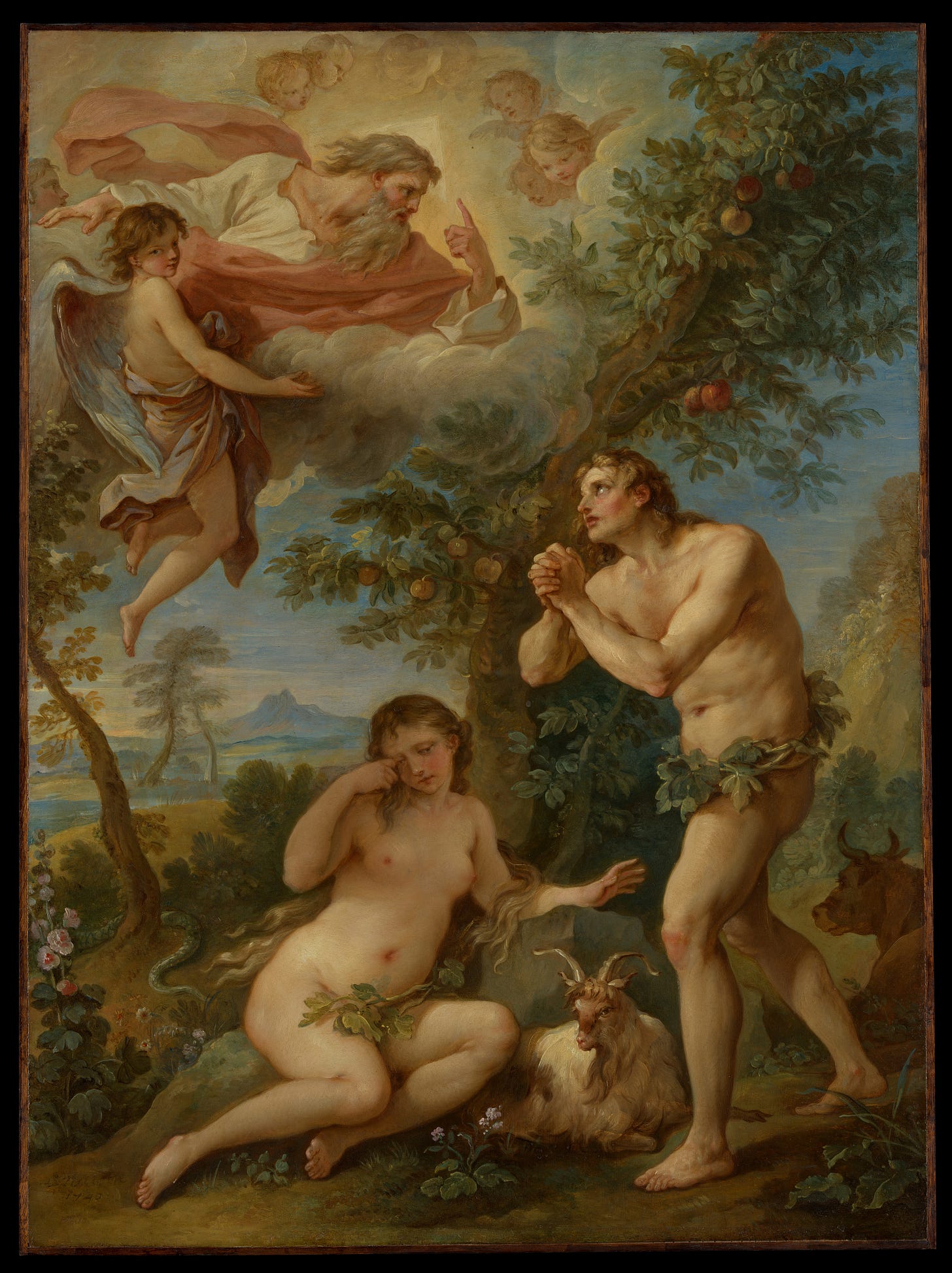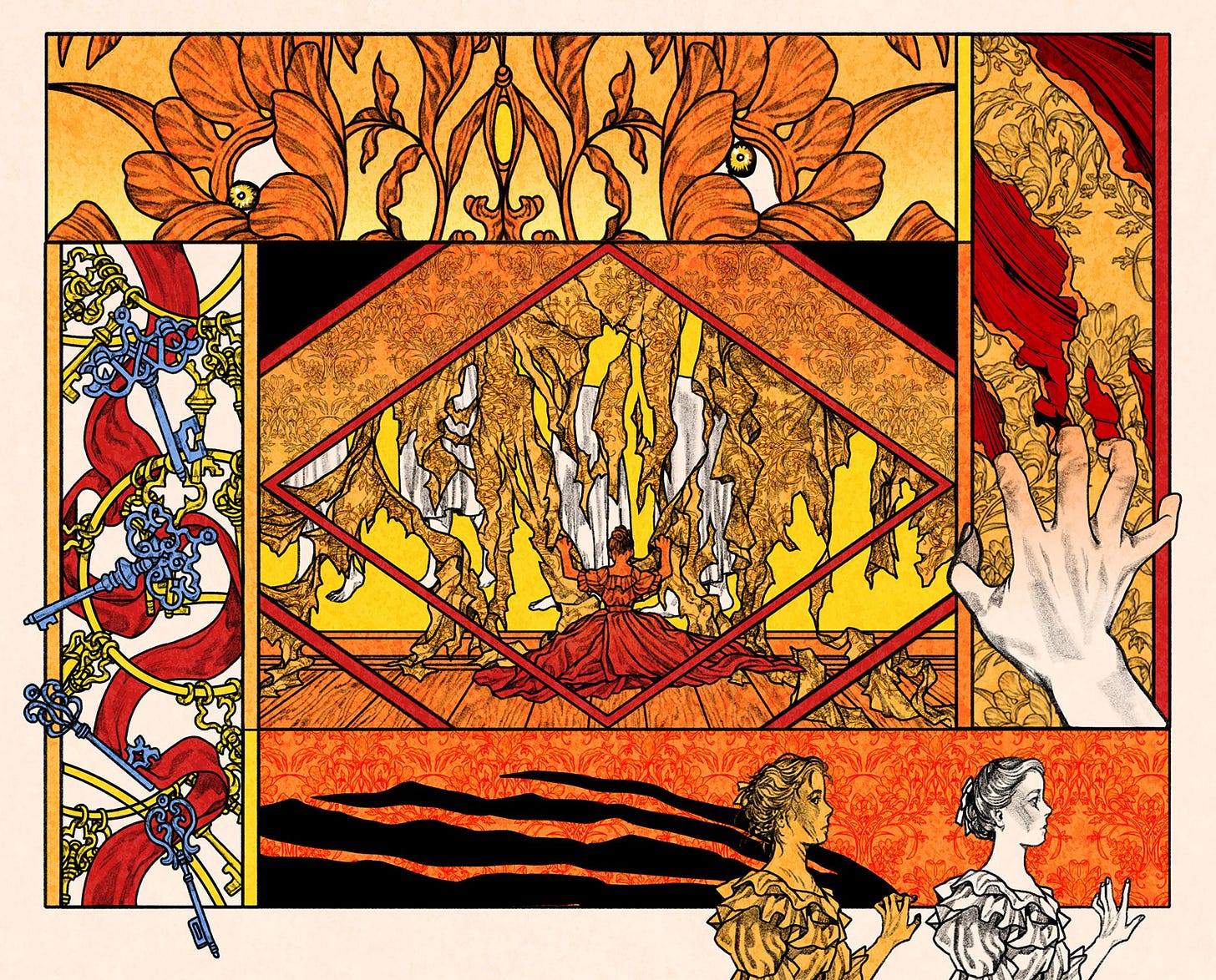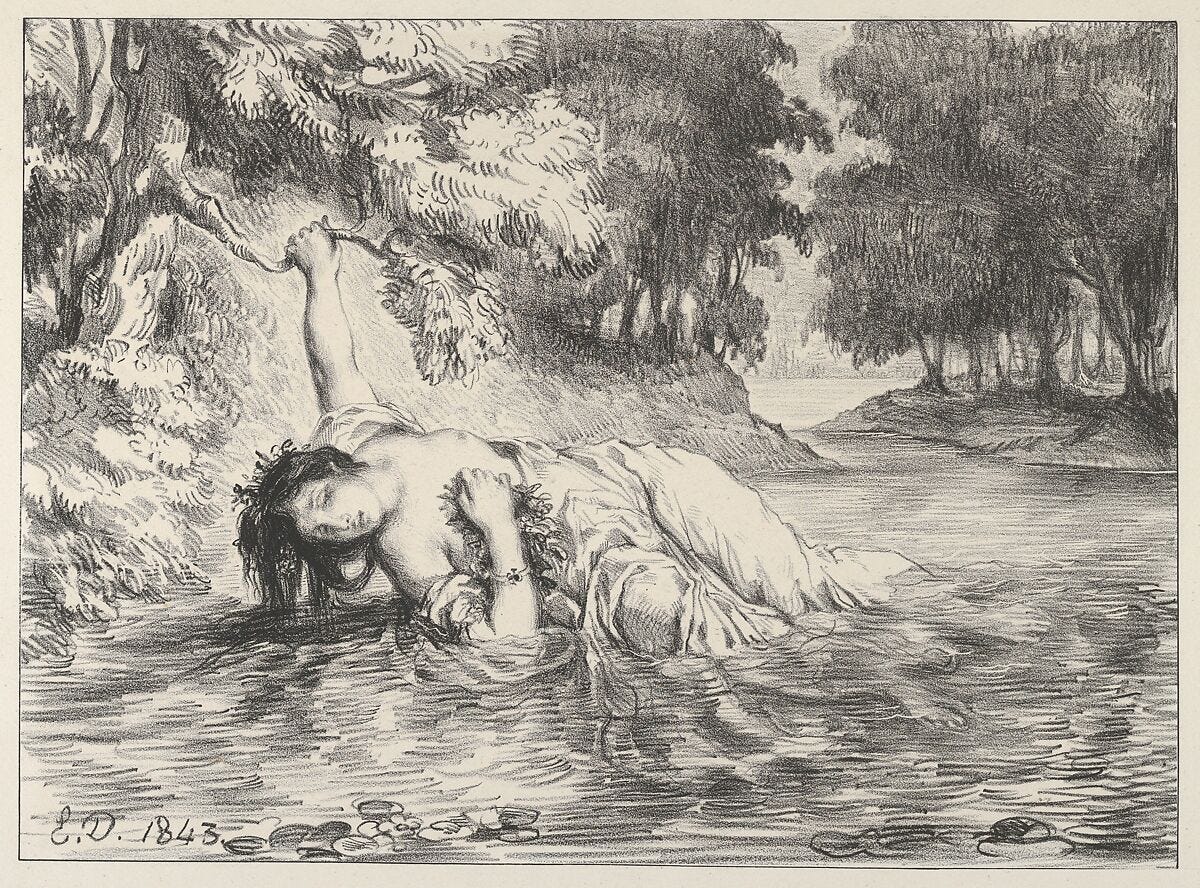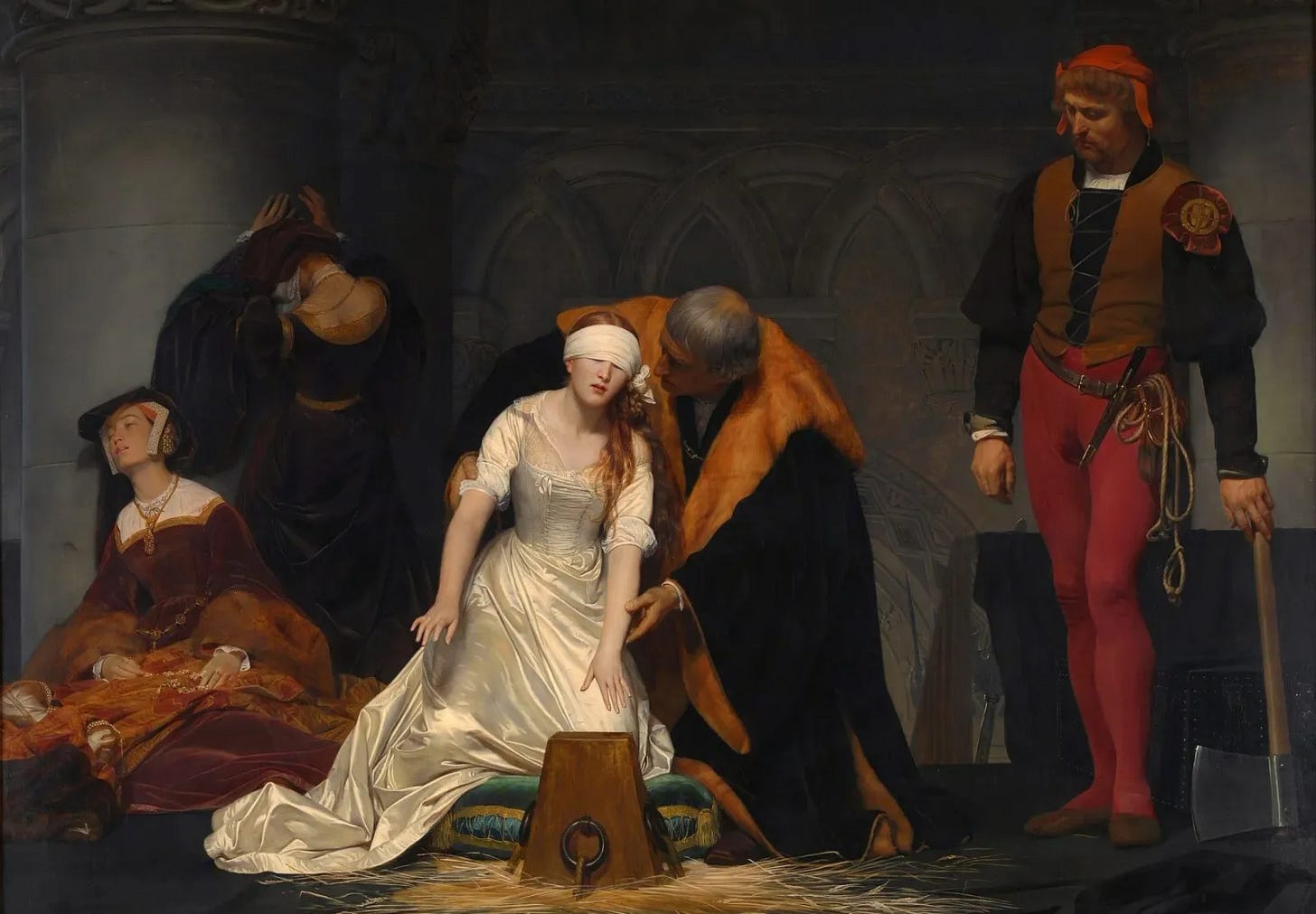The Burden of Beauty and Pain: How Literature and Media Glorify Women's Suffering
Unraveling the Romanticization of Female Pain from Medieval Texts to Modern Storytelling
The ideals surrounding womanhood, motherhood, and general femininity are impossible to face without acknowledging notions of the inherent suffering attached to it. Just about every instance of womanhood confronted in the media, from pop-culture to literature, supports this phenomenon. What we have failed to accomplish as a society is to truly understand why this sort of trope is ever present, and how to combat it.
With literature being one of society’s first recorded instances of media, it’s important to look back and study how we have spoken about and towards women as we progressed in literary history. Looking back at works as early as the 12th century with Marie DeFrance’s poem Bisclavret, we see one of the first recorded instances of an author noting ironically on the glamorization of women suffering. In her poem, she describes a woman who ended up being married to a werewolf, or what they’d refer to in medieval texts as Bisclavret. After she leaves her husband, once he admits to murderous tendencies, she is given complete blame for his troubles and is punished in gruesome ways that not only affected her, but generations of women from her bloodline afterwards.
Her technique of showing blatant disregard of giving this woman any agency clearly notes on the roles of women present in medieval society. It’s further emphasized as she simultaneously gives undeserved heroic descriptions of the Bisclarvet, ultimately romanticizing his journey and how his wife was the assumed reasoning behind his fall. I’m also sure this present trope of generations of women being chastised for disproportionate mistakes DeFrance includes at the end sounds familiar. This is because it’s also present in the story of Adam and Eve, a fundamental Catholic text. With most cases of literature stemming from religious backgrounds, especially considering Catholicism’s impact on early century British writings, it’s not surprising to see many connections to the views of women being inspired by stories like Adam and Eve. Having this in mind, it’s important to acknowledge the concept of women demonstrating suffering in literature has been ever-present since the very beginning of society.

As we moved into the 1800s, literature began to adopt and popularize female characters as one-dimensional martyrs conjured by male authors, such as E.T.A Hoffman’s The Sandman. In his work, the main character and narrator speaks poorly and even villainizes his fiancee after describing her as outspoken and unique. He goes on to create his ideal version of a woman in his imagination, who is thought of as bland, only ever existing and speaking exactly when the narrator wishes her to. The use of women in older literature has commonly only been demonstrated in harmful ways similarly to the way Hoffman writes about them. Once female authors began to reclaim these narratives, societal stigma once again turned them into negative subversive figures. World renowned works like Kate Chopin’s The Awakening and Charlotte Perkins Gilman’s The Yellow Wallpaper have been reduced to being categorized as “sad girl poetry,” when in reality, they were groundbreaking models of women stepping into a field that had only ever brought them down. Because of this it's important to acknowledge how women are routinely met with condescension whenever they attempt to write about their experience in a non-glamourized way.

As we’ve moved through history, we have witnessed female pain primarily being considered a muse for artistic pain, from the canon of female suicide in British Romanticism, to modern media like “Girl, Interrupted.” Following the Romantic Era of writing, ideals of the femme fatale were completely exploited. Even the death of Ophelia in Shakespeare’s Hamlet has been commonly thought of as one of the most romantically beautiful deaths in literature, when in reality she took her own life after the pressures of womanhood became too overwhelming. This archetype of feminine suffering being canonised as something inherently poetic is not only harmful in literature, but also in real life. It almost seems as if the line between empowerment and exploitation have blended together when considering the politics of gender in text and media.

Moving more into our current modern era of media is where we see more subtle examples of this occurring, as it’s become so common in our society. When you think of examples in real life, it’s impossible to recognise without seeing the harm it’s caused for women’s reputations. In the 1960s, we lost both Marilyn Monroe and Sylvia Plath, due to them taking their own lives. Thought of originally as a tragedy, society has skewed their deaths into something to be romanticized. The film industry, along with other forms of media, have to this day continued to seek new ways to capitalize on the trials of their lives.
As society has progressed, we have given women a platform to share their stories, but it comes at the price of judgement and control of their narratives. As we continue in our patterns, we’ve adopted the tendency to idolize beautiful and talented women who die young. While doing this, we also tend to contradict ourselves by constantly reprimanding women for the way they age or what they accomplished in our modern world. It poses the question: would we approach these women with the same language and media coverage if they had not died young? What if we examined them with the same scrutiny that we do with women who have aged out of what society has deemed their prime to be?
It’s clear through the history of literature and media that we’ve become obsessed with tragedies surrounding women. It’s an impossible theme to avoid especially in a society where all women have suffered in one way or another due to the heavy prevalence and constant presence of misogyny. Due to this, I’ve found it of heavy importance to immerse myself in literature similar to Marie DeFrance that continues to note on the issues women face without glamorizing or romanticizing it in a way that’s so common and unphasing to society.
Carmen Machado, for example, tackles these issues in a very straight forward and beautifully written way in many of her works, including her short story, The Husband Stitch. In this story we see our narrator blossom through life and go through the typical American dream, with a darker insight to what she sacrifices and suffers through in order to show her love for the men in her life. Despite her efforts, by the end of her life, she feels as if nothing she ever did could be good enough to please her husband or son. Even the main character's death is presented in a way that refutes the trope of “beautiful deaths” of young women, and instead follows the suite of the gruesome reality of women’s lives. The narrative through this woman’s life demonstrates a true representation of many people who relate to each other through their suffering due to inherent misogyny. Without holding anything back, Machado depicts a very graphic life of the unavoidable emotional and physical turmoil attached to womanhood. And she does so in such a linguistic way that has brought most women I know, who have read it, to tears.
Related works to Machado, like Angela Carter’s The Bloody Chamber and Octavia Butler’s Bloodchild similarly tackles these themes. Rather than surrounding the lives of these women and their struggles with flowers and rainbows, like Shakespeare does, these female authors uncover the physically horrific and shocking aspects of womanhood. Most literature and media have simply glazed over these more realistic ideas in order to solidify the idea that women’s suffering is something to be romanticized. By doing this, autonomy has been regularly rejected. It’s not until we start to embrace works written by women like DeFrance and Machado that reflect true experience, that we’ll start to understand the harmful nature of romanticizing women who suffer.






